So you all remember that sign I showed you recently? The one that said "Danger/Pelligro! Crocodilio!"or words to that effect? Well here is what happens when you don't show those signs the proper respect.
This is a large female orinocco crocodile in the 12-14 foot range (I'd guess) and she is running. This was one of three females guarding nests right next to our accomodation in Hato el Cedral. One seemed quite lacadaisical in her nest care, one was so slyly hidden I didn't notice her for two days but was always right next to her nest and this was the third. She was rather aggressive. This was actually taken from our truck which was on the road several metres from her nest but she still gave us a charge to be clear who was boss.
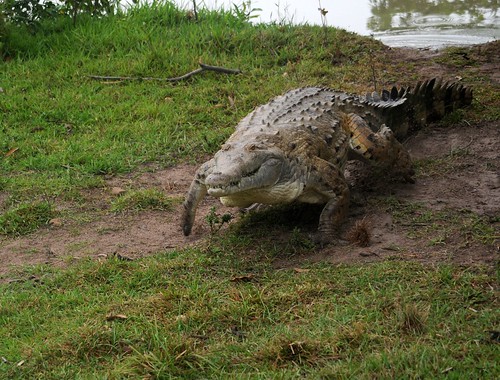
Orinoco crocs are one of the rarest in the world - there are only 700 or so adults left in the wild. About 80 of those are in the area around Hato el Cedral apparently. I would guess we probably saw 10 or 12 individuals in our stay but the three sheilas were always by their eggs.
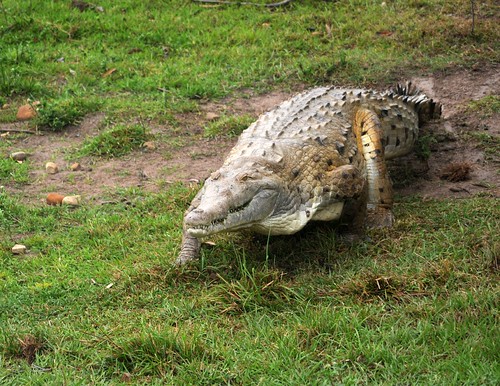
Just before hatching the eggs will be removed so the young can be headstarted to a sensible size for rerelease. Orinocos took a pasting due to the skin trade and since they share their range with the abundant spectacled caiman (I'll show you more clearly how obvious the differences are later in the week) their young often get picked off by adult specs as well as all the other predators that take all young crocodillians. Past experience of having her eggs taken may have made this one a little edgy....or she may just be meaner than the other two.
Obviously with these big beasties lurking I had the opportunity for some spectacular photos of a very rare animal. Now we've introduced ourselves properly to the critter in question I can share some of the more interesting photos in other posts but for now I know what you're thinking.....Since the croc was up and out of the water did he move in for the Steve Irwin shot?
Yeah I did! The croc is a bit further away than you'd think here (although I still don't think we got the foreshortening technique quite right). Needless to say, we should still probably end by talking about shop safety, don't try this at home - we had guides with us who knew the crocodile, knew where its nest was and knew exactly where was, and wasn't, safe to be. By now there should be a wodge of new healthy orinoco crocs thanks to momma's careful protection.
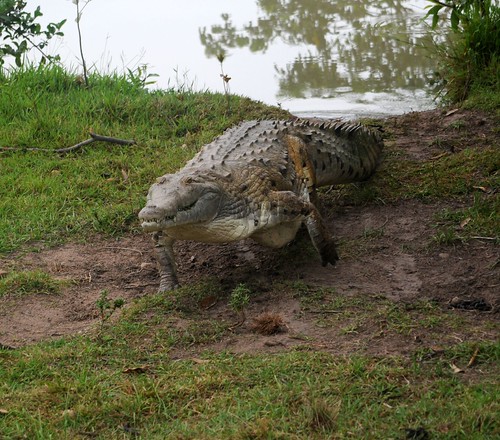
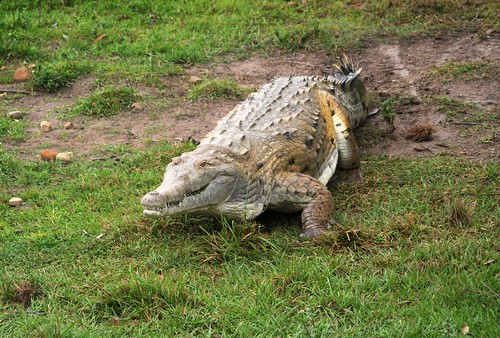
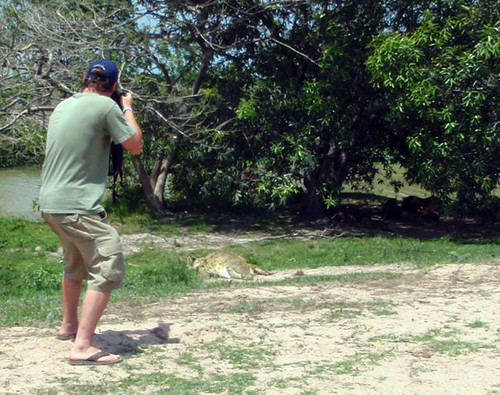
4 comments:
Great shots! That's a magnificent croc!
Beautiful - - - maybe.
Scary - - - DEFINITELY.
Be careful - - - remember what happened to Steve when HE got to close to one wild organism!!!
Wow, very cool! To be that close to croc's, and the whole adventure in itself. Great shots! :)
Thanks for the kind comments all.
Post a Comment